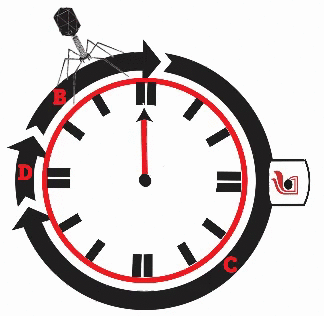2022/04/03: Our old work is featured in a Blog from iGEM commemorating world TB day Stories, announcements, and insights from around the iGEM community

2019/11/15: The study by Yash^2 (Yash Joshi and Yash Jawale), begun as a part of iGEM2017, on re-designing a dual-feedback genetic oscillator is accepted as a paper in the APS Journal Phys. Rev. E. “Modeling the tunability of the dual feedback genetic oscillator”.
2019/11/05: The IISER-Pune-India iGEM2019 team has been awarded a silver medal for their efforts! Great job team. Some interesting comments from the measurement committee to Varsha who focused on measurements.
2019/08/20: The wiki with documentation can be seen on the 2019iGEM webisite- wiki
2019/05/01: The iGEM2019 team is assembling and taking shape.
2017/11/13: At the Giant Jamboree in Boston the IISER-Pune-India team wins a Silver Medal. Also nominated for Safety Commendation. See the full results of the Jamboree here.
YouTube Video of the 2017 iGEM @iiserpune team
2017/10/06: The first of the many steps in cloning genes- 3A assembly to PCR-based ligation free cloning are beginning to show results. Time to start charachterizing the parts, one part at a time. In the meantime, the wiki design is set and we seem to be in for a fun ride.
2017/09/20: Tickets are booked for the Giant Jamboree! All set for Boston, to boldly go where no synthetic biologist has gone before (to rephrase Star Trek).
2017/07/15, 16: The India and Regional Meetup ended on a high. With talks from almost ALL india-based teams and a pleasant surprise with speakers over Skype from Pakistan, we were in for a fun ride – both the science and the catching up. Some videos of the talks are publicly available.
2017/6/23: On the dictum of “I measure, therefore I am a biophysicist”, the team is almost done with some fun with the calibrated measurement of gene expression, also known in iGEM terms as the “Measurement Track”. This time it has become a must do event, since it is necessary to qualify even for a bronze medal. The value of this to data-reproducibility is high and we look forward to seeing the consortium results.
2017/3/1: The IISER Pune iGEM team in 2015 worked on a project we referred to as “Mycobacterium revelio” and you can read all about it on both the 2015.igem.org site as well as the PLoS One report.

IISER Pune iGEM2015: Mycobacterium revelio
With the aim of using regulatory elements of DNA to program new behaviour at an organism level, the synthetic biology practised in the international genetically engineered machines (iGEM) contest is at the interface of many exciting areas: computaitonal biology, biophysics, cell biology, gene regulation, network dynamics and applied biotechnology (to name a few).
This year, in 2017 we hope to assemble a team and try some new things with synthetic biology.
For a quick reference guide some reading material:
- Synthetic biology- what it possibly is and is not
- Some limitations to the kinds of problems we can solve with synthetic biology (world peace is not in that list)
- The most complex (in 2012) gene circuit built from scratch so far by Chris Voigt and group- Moon et al. (2012) Genetic programs constructed from layered logic gates in single cells Nature 491: 249 doi:10.1038/nature11516
- The India Meetup of iGEM2015 teams at IISER Pune
- iBEC: the funding initiative to increase the momentum in SynBio in India
- My experiences with synthetic biology and ten undergraduates
- Call for proposals by BIRAC in Synthetic Biology: Last date 30-June-2018





